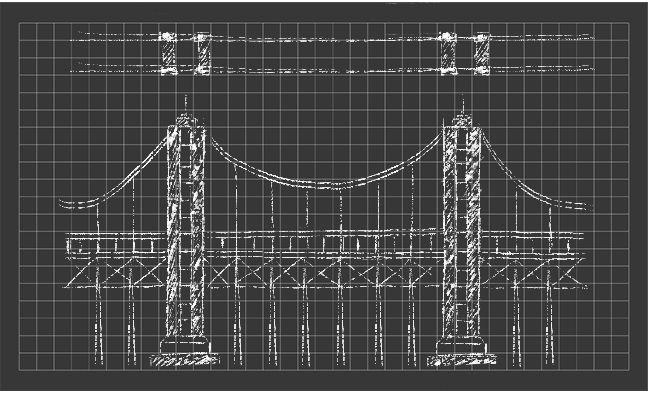In August 2017, two NC State graduate students and a professor in the Department of Civil, Construction, and Environmental Engineering (CCEE) partnered with the North Carolina Department of Transportation to improve bridge durability and lifespan. With one year of the project remaining, the team shared what their research means for the department, NC State and North Carolina as a whole.
The team contributing to this research includes Zakariya Bourara, a graduate student in civil engineering; Brad McCoy, a Ph.D. candidate in civil engineering; and Rudi Seracino, a professor of structural engineering and associate head for undergraduate programs in the CCEE department.
“What we are trying to do is address limitations on existing bridges in North Carolina due to deterioration over time,” Seracino said. “Because of environmental conditions, the performance in terms of the strength or serviceability of bridges deteriorates over time, and they can reach a point where the deterioration is at a level where you need to restrict the traffic on the bridge.”
Seracino said that traffic is restricted by reducing the allowable weight of a truck that can cross the bridge, reducing the speed limit or even reducing the number of lanes.
“Basically we design this experimental program, see where to evaluate the research gap in terms of what materials we’re going to be using, address those gaps, design our retrofit, conduct this experimental program and then deliver guidance on our findings to the DOT,” Bourara said.
Seracino said that this partnership is possible thanks an NCDOT-funded research program in which universities can submit proposals to address various research questions that they have.
“They are funding the project, which allows it to happen and lets graduate students do the work on the projects as part of their research theses,” Seracino said. “They provided us with the beams that we’re testing. All the beams we are testing came from existing bridges that were in service in North Carolina.”
In addition to both funding the research and providing the beams, Seracino said that the NCDOT also has an advisory team of engineers which provides direction and guidance throughout the project. McCoy said that the NCDOT is providing a total of $300,000 to this project.
“One was a coastal bridge, where deterioration could be because of the saltwater that corrodes the steel reinforcement internally,” Seracino said. “The other bridge is in a rural area, and deterioration is due to runoff from agriculture trucks and fertilizer, which also damages the concrete and can cause corrosion of steel. The bottom line is that the types of bridges that are affected are across the state. It’s not restricted to a specific nation or a specific environmental condition.”
Since the project started, Seracino said, two NC State undergraduate students have contributed to this research, although the findings will benefit all students in the CCEE department.
“The reality is that the work we’ve been doing applies to bridge systems across the U.S. and worldwide,” Seracino said. “It is producing fundamental research that’s allowing us to train graduate students in innovative research, which results in publications, which is an important aspect of what we do as a research-intensive university. At the same time, the project has very practical applications and has an immediate impact of improving structures in society.”








